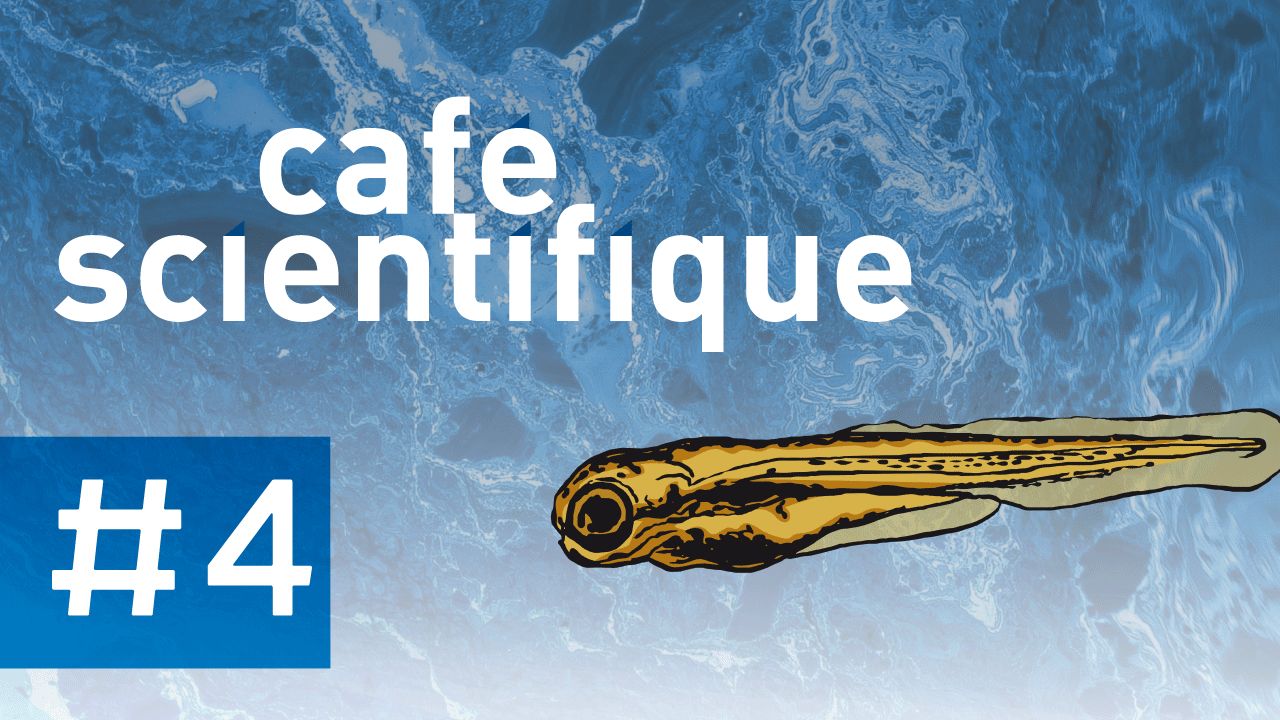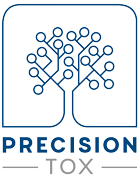The zebrafish, Danio rerio, has become a popular model organism in basic biology and biomedicine. It is easy to breed in the laboratory and provides researchers with large amounts of synchronously developing embryos, making it an organism of choice for genetics and developmental biology. Embryos and larvae are largely transparent, allowing to assess organ development noninvasively. Embryos can be genetically engineered to express proteins that permit to fluorescently label distinct tissues or cell types, allow to measure neural activity, or enable visualization of hormonal signaling in the living organism. These experimental features have stimulated the use of zebrafish for research in many areas of biology, such as neurobiology, drug development, and toxicology. In this Café Scientifique presentation, Thomas Dickmeis from the Karlsruher Institute for Technology (KIT), will review some of the recent developments in the use of zebrafish embryos for the assessment of chemical compound effects on different organs and physiological processes, including developmental toxicity, cardiovascular toxicity, endocrine disruption, and neurotoxicity. A particular focus will be placed on methods for the automatization of chemical screening procedures and the sophisticated imaging possibilities available in this model system.
Café Scientifique
Café Scientifique is a series of regular webinars delivered by PrecisionTox project partners and collaborators on topics related to the project subject domain.
Season 3
Key Areas of Regulatory Challenge (KARC): how researchers can contribute to the regulatory uptake of NAMs
Presented by: TOMASZ SOBANSKI
European Chemicals Agency
Abstract
Tomasz was joined by Mark Viant (Michabo Health Science Ltd), who discussed how PrecisionTox can contribute to ECHA’s strategy and priorities to shift away from animal testing through development of alternative methods to safeguard human health and the environment.
TOP of the TOX – The Pop-Culture Tour of Chemical Regulation
Presented by: LAURA HOLDEN
Birmingham Law School
Abstract
Organ-on-a-Chip: Advancing the safety assessment of chemicals in human health and environment
Presented by: JANIRE SAEZ CASTAÑO
Ikerbasque Research Fellow and Visiting Professor at Universidad del País Vasco/Euskal Herriko Unibertsitatea
Abstract
In this seminar, we will dive into the development of microfluidic technologies and their application in chemical assessment for human health and the environment. Among some advantages, microfluidic devices offer optical transparency, miniaturization, and controlled media perfusion required in Organ-on-a-Chip models.
We shall discuss the commercialization of Organ-on-a-Chip systems, their limitations and prospects. Finally, we will introduce some examples of Organ-on-a-Chip systems developed at the Microfluidics Cluster UPV/EHU.
A biological and question-based framework for NAM-supported hazard and safety assessment
Presented by: Brian Berridge
B2 Pathology Solutions
Abstract
Is the absence of clearly defined questions that can be answered during hazard assessment the primary barrier to a new chemical testing paradigm that utilizes New Approach Methodologies (NAMs)?
Learn about the work of Brian Berridge, a PrecisionTox Stakeholder Advisory Group member, who promoted an evidence-based biological and questions-based approach (BQBA) to guide fit-for-purpose method selection for assessing chemical safety. A key pillar of this approach is to measure and toxicologically interpret “bioactivities” that are minimally indicative of a hazardous response and provide information specific to a toxicological question. This information may relate to our understanding of how biological processes are disrupted or how organs fail due to the chemical modes of action. Brian compared this BQBA with current hazard assessment approaches when applied within varying pathobiological scenarios and according to varying regulatory testing requirements. You can read this publication here https://doi.org/10.1093/toxsci/kfad124
Brian was joined by John Colbourne, the PrecisionTox Coordinator. Listen in on their discussion on how PrecisionTox may be helping to define many fundamental questions represented in the BQBA framework.
Season 2
Xenopus leavis: A fully aquatic tetrapod model
Presented by: Dr. Andrew Tindall
Laboratoire Watchfrog
Abstract
Xenopus laevis has been used as a model organism in many fields of biology since at least the start of the last century. In particular, it has been a key model for studying the developmental biology of vertebrates, immunology, gene function, endocrinology and toxicology. As a fully aquatic amphibian, both pre-and post-metamorphosis, they are easy to maintain. Xenopus produce large clutches of eggs, which develop into transparent embryos and larvae. Over the last thirty years, the development of techniques for studying and manipulating the genome of Xenopus has opened the door to new applications for studying the activity of signalling pathways and developing models of human diseases. In this Café Scientifique we will discover the wide range of applications of Xenopus in different fields of research and some of the interesting models that have been developed.
FAIR data: no longer optional, but it takes a village!
Presented by: Prof. Susanna-Assunta Sansone
& Dr. Philippe Rocca-Serra
University of Oxford
Abstract
The FAIR Principles that we have co-authored, have propelled the global debate in all disciplines on the importance of Findable, Accessible, Interoperable, and Reusable data, by humans and machines, and the need for better research data management, transparent and reproducible data worldwide. FAIR has united stakeholders world-wide behind a common concept: good data management under common standards. FAIR is a fundamental enabler for digital transformation in the public and in the private sectors. It is no longer optional. However, the FAIR Principles are aspirational, and putting FAIR into practice is work in progress; it “takes a village”!
Starting with a brief history of the Principles, Susanna will paint the landscape of key initiatives and community activities for data and software. Philippe will introduce key resources, relevant to Precision Tox, that can be used in a FAIR data/software lifecycle for a project or centre; these include ISA for describing the experimental details, and educational resources such as the FAIR Cookbook, with best practices for research data management and hands-on recipes to make and keep data FAIR.
Broadening the use of the sentinel species Daphnia beyond regulatory toxicology
Presented by: Prof. Luisa Orsini & Dr. Xiaojing Li
University of Birmingham
Panel discussion:
PhD student Muhammad Abdullahi, University of Birmingham & Joe Shaw, Indiana university (TBC)
Abstract
Season 1
Cell-based bioassays for PrecisionTox… and what else can you do with them?
Presented by: Prof. Beate Escher
Helmholtz Centre for Environmental research
Abstract
Cell-based bioassays are at the bottom of the food chain in PrecisionTox but they will hopefully provide relevant information on chemicals’ effects on the cellular level. This webinar will give an introduction to cell-based in vitro assays and how they are used for mechanistic research on cellular toxicity pathways, for the risk assessment of chemicals and in environmental monitoring & biomonitoring. A particular focus will be put on the exposure in cell-based bioassays, introducing tools on how to measure and model the exposure in high-throughput screening assays, which are performed on multi-well plates in small volumes of 20 to 100 μL. A pragmatic experimental workflow to assess stability of test compounds in bioassay media will be presented. A combination of measurements and modeling sheds further light on the exposure, which will help to interpret the results and set the detected effects in context of baseline toxicity.
A Drosophila model for Toxicogenomics
Presented by:
Prof. Robert Anholt
Prof. Trudy Mackay
Maria Adonay
Yu-Chen ‘Janet’ Pan
the Centre for Human Genetics, Clemson University
Abstract
The genetic factors that give rise to variation in susceptibility to environmental toxins remain largely unexplored. Studies on genetic variation in susceptibility to environmental toxins are challenging in human populations, due to the variety of clinical symptoms and difficulty in determining which symptoms causally result from toxic exposure; uncontrolled environments, often with exposure to multiple toxicants; and difficulty in relating phenotypic effect size to toxic dose, especially when symptoms become manifest with a substantial time lag. Drosophila melanogaster is a powerful model that enables genome-wide studies for the identification of allelic variants that contribute to variation in susceptibility to environmental toxins, since the genetic background, environmental rearing conditions and toxic exposure can be precisely controlled. The many community resources for D. melanogaster can be leveraged to identify naturally occurring variants, genes, genetic pathways and mechanisms underlying susceptibility to environmental toxins. These include the D. melanogaster Genetic Reference Panel, a population of fully sequenced and extensively annotated wild derived inbred lines, tissue- and developmental stage-specific RNA interference constructs, and mutations in most genes in the genome. We will describe these resources and show how they can be used to explore the genetic basis of sensitivity/resistance to arsenic, an ubiquitous environmental toxin of worldwide concern that presents serious health risks. We will discuss how we can identify allelic variants associated with susceptibility/resistance to arsenic and construct genetic networks associated with arsenic sensitivity. These networks can be compared with those obtained previously for susceptibility to lead and cadmium, to identify common versus specific elements for sensitivity to heavy metal toxicity. We will superimpose human orthologs on these networks as a blueprint for subsequent studies in human populations. Thus, Drosophila can serve as a translational toxicogenomics gene discovery system.
High-throughput, alternative animal toxicity testing using the nematode Caenorhabditis elegans: An historical perspective
Presented by: Prof. Jonathan Freedman
from the University of Louisville

Making toxicity transparent: How zebrafish embryos help evaluating adverse effects of chemicals
Presented by: Dr. Thomas Dickmeis
from the Karlsruher Institute of Technology (KIT)


